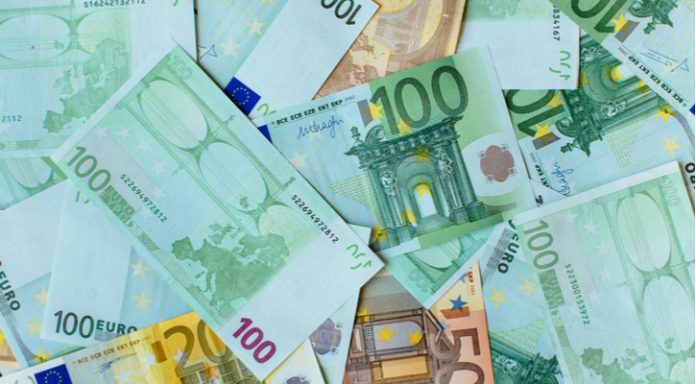 |
The euro US dollar exchange rate slipped lower in the latter part of the previous week. The pair experienced its largest decline of the week on Friday, when the pair slipped 0.3% to close at US$1.1024. The pair is holding steady at the start of the new trading week.
German Data To Lift Euro?
Earlier in the month, German GDP data showed that Europe’s largest economy avoided a technical recession. However, data last week still painted a dismal picture of the health of the German economy. Markit’s flash Purchasing Managers Index for November showed a slowdown in the service sector. Whilst the contraction in the manufacturing sector appears to be moderating, it is dragging on both the German economy. The Eurozone PMI data also confirmed that the bloc grew at a slower pace owing to a continued contraction in the manufacturing sector and slower expansion in the service sector.
Germany will stay in focus today as investors look towards German IFO Business climate data. Analysts expect the reading to rise slightly to 95, up from 94.6. The sentiment index is closely watched as an early indicator of business expectations in Germany. A strong reading could help underpin the euro.
More Stimulus Needed
On Friday the new European Central Bank (ECB) President Christine Lagarde gave her first official speech at the helm of the central bank. Christine Lagarde highlighted the uncertainty that still marred the global economy. She called for a new policy fix, which includes fiscal stimulus. The call for further fiscal stimulus, has on other occasions offered support to the euro given its inflationary pressures. However, the euro was less bullish because regardless of her policy mix, Christine Lagarde is sure that the eurozone needs more support. This unnerved euro investors.
US EU Trade Tensions
The euro could come under pressure in the week ahead if US — EU trade tensions flare up. Officials in Washington are reportedly looking for ways to impose tariffs on EU even after President Trump missed 14th November deadline to impose levies. This matters to the euro because a prolonged EU — US trade dispute would almost certainly add pressure to the eurozone industrial sector, which is already struggling amid the ongoing US — China trade dispute, Brexit and slowing global trade. An escalation in cross Atlantic tensions could weigh heavily on the eurozone’s growth expectations and therefore the euro.
Fears of a manufacturing slowdown spilling over into the service sector remains and with good reason. Should the slowdown spread across the economy jobs and employment would be affected and inflation, which is already weak would drop further. The Eurozone economies have shown relative resilience purely because the employment and job creation have remained solid, keeping the economies afloat.
This week investors will keep a close eye on inflation readings from Germany and the eurozone and German employment data. Further weakness could see the euro test the key psychological level of US$1.10.
Dollar Pares Gains
Demand for the US dollar picked up across the previous week, with the greenback rising not just against the euro but against most of its major peers. The rally in the dollar comes following upbeat US data, less dovish minutes from the FOMC and amid mixed messages over a US — China phase one trade deal.
PMI Data Lift Dollar Lasts Week
On Friday, the dollar experienced its biggest jump of the week following the release of US PMI data. Whist the PMI data is slightly less influential than the ISM numbers, the stronger prints for both the manufacturing sector and the service sector helped boost the dollar. The manufacturing pmi rose to 52.2 in November, up from 51.3 in October, whilst the service sector pmi increased to 51.6 this month, up from 50.6 in the previous month. The data has boosted the outlook for the US economy, supporting the dollar.
Trade News
Mixed trade messages have kept the dollar range bound across the past few weeks. However, on Friday both China and the US underscored their desire to sign a phase one trade deal 16 months after the dispute started; a dispute which has hit confidence and slowed economic growth across the globe.
Over the weekend China said that it would have ought penalties for Intellectual Property theft, a move seen as a gesture towards the US. The announcement boosted risk appetite in the financial markets, hitting demand for the safe haven dollar.
Progress in trade talks could stop in their tracks if President Trump decides to sign a bill into law supporting the human rights of Hong Kong’s pro-democracy protestors. Such a move could anger Beijing, adding another dimension of political struggles.
Week ahead
This week is a holiday shortened week in the US, however there are still several high impacting data points that investors will be watching in addition to any US — China trade talk developments.
On the US calendar, consumer confidence on Tuesday and data surrounding Black Friday will be under the spotlight as it sheds light on the health of the US consumer. Durable goods in addition to a second reading on the third quarter GDP will also be closely watched.
 |
| What do these figures mean? |
| When measuring the value of a pair of currencies, one set equals 1 unit and the other shows the current equivalent. As the market moves, the amount will vary from minute to minute.
For example, it could be written: 1 EUR = 1.12829 USD Here, €1 is equivalent to approximately $1.13. This specifically measures the euro’s worth against the dollar. If the U.S. dollar amount increases in this pairing, it’s positive for the euro. Or, if you were looking at it the other way around: 1 USD = 0.88789 EUR In this example, $1 is equivalent to approximately €0.89. This measures the U.S. dollar’s worth versus the euro. If the euro number gets larger, it’s good news for the dollar. |





